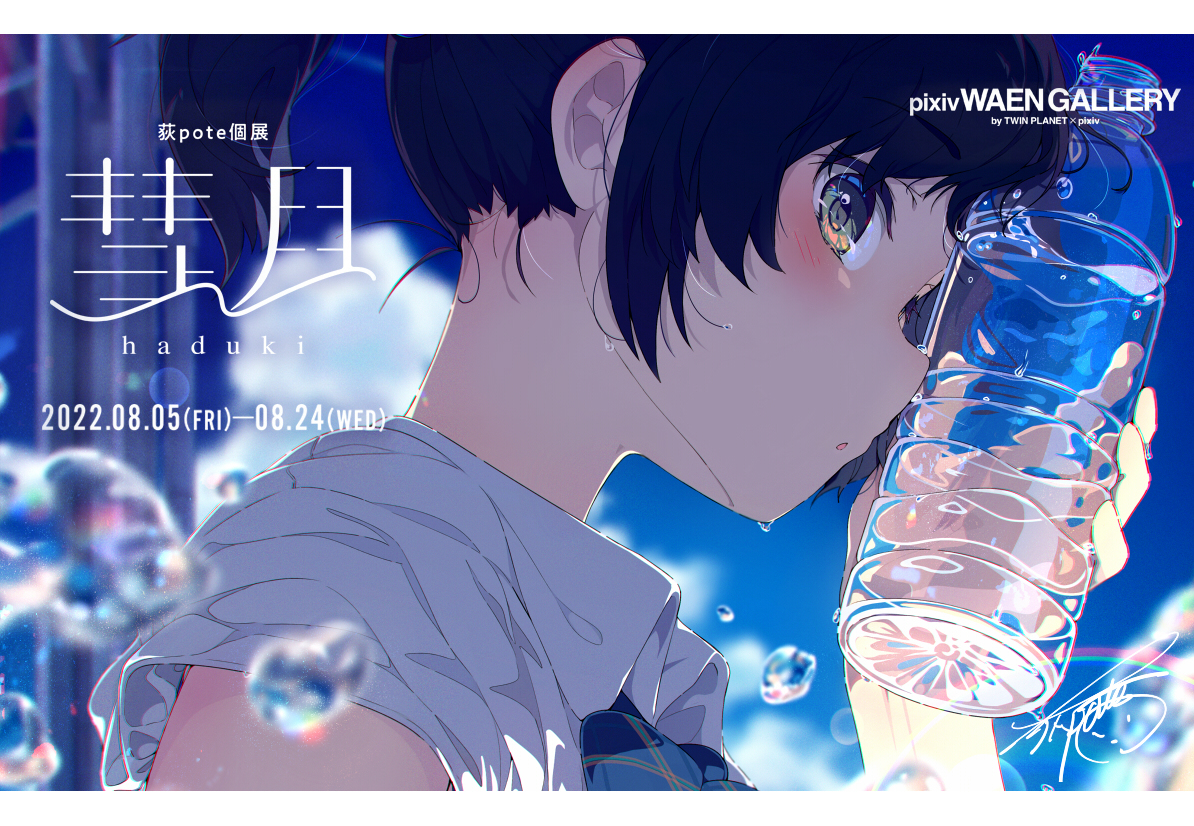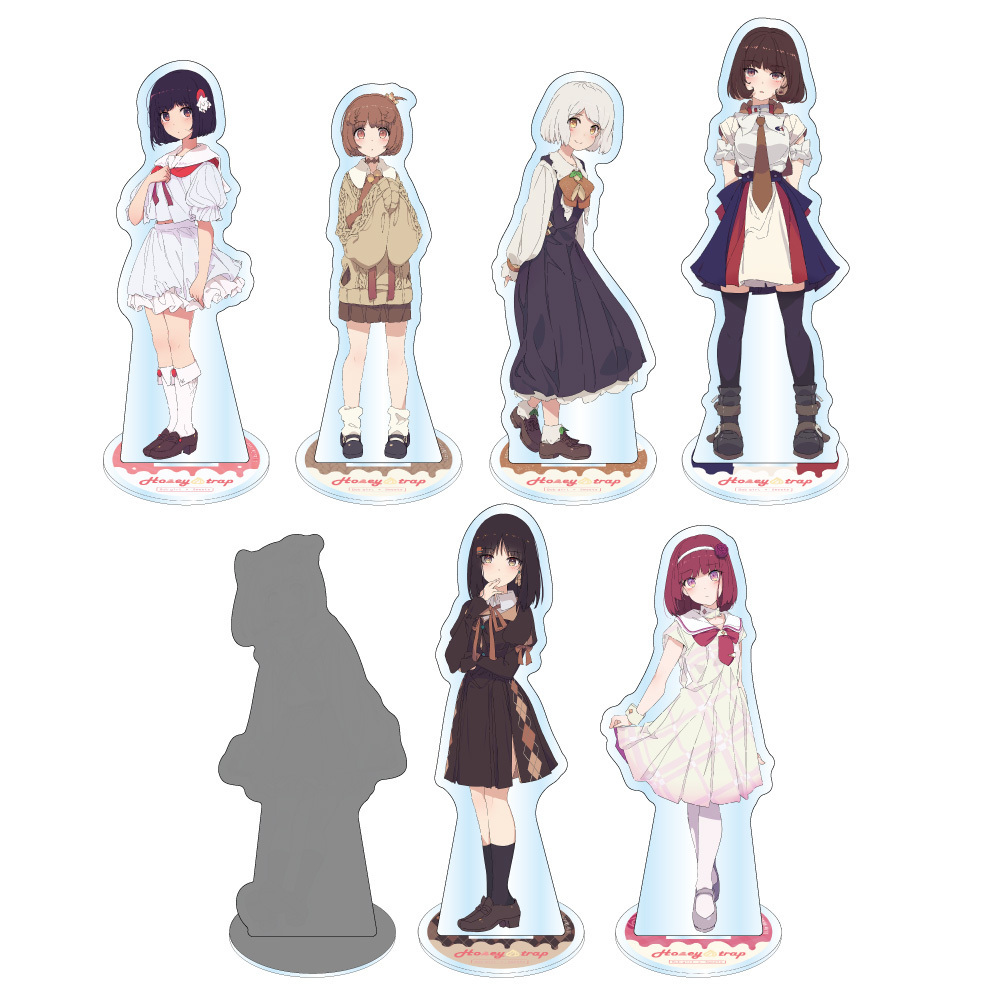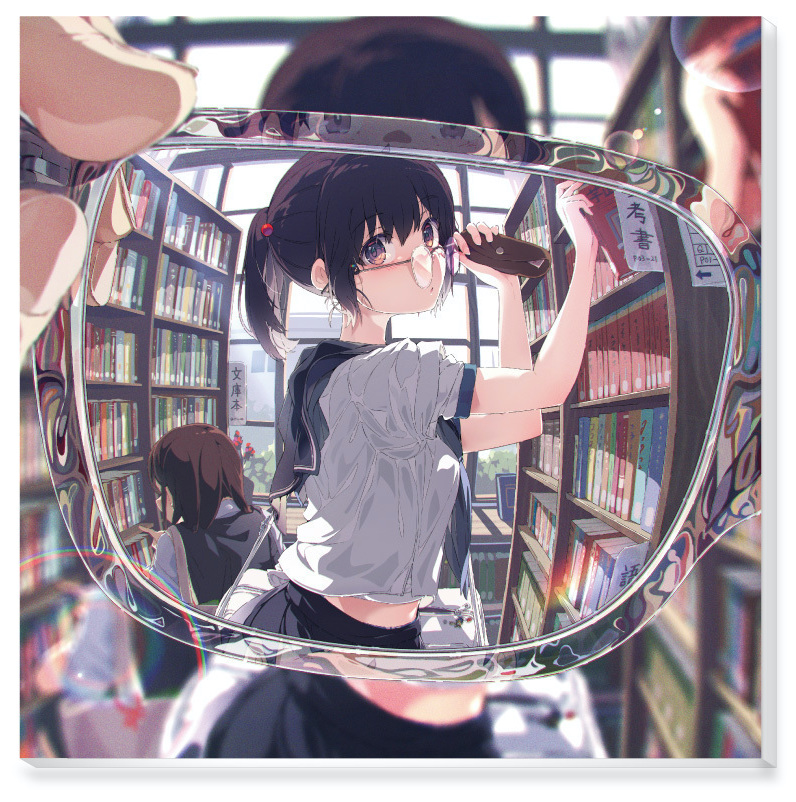「人を泣かせるイラストが描きたい」イラストレーター 荻poteからアニメ塗りの極意を学ぶ
イラストレーターの荻poteさんの個展「彗月(はづき)」が、東京・表参道にある「pixiv WAEN GALLERY」にて2022年8月24日(水)まで開催中です。内装にもこだわりノスタルジックな雰囲気ただよう空間の中、オリジナルイラストを中心に80点が展示されています。
ベタ塗りで陰影がはっきりしたアニメ塗りは初心者にも取っつきやすい一方で、ともすれば単調になりがちな難しさもあります。それを独自に進化させ、いわば“アニメ塗り・改”とも言うべき手法を追求する荻poteさんに、テクニックの一部を教えてもらいました。
『けいおん!』は衝撃だった
── 本日はよろしくお願いします。「荻pote」というペンネームは響きがかわいいですね。
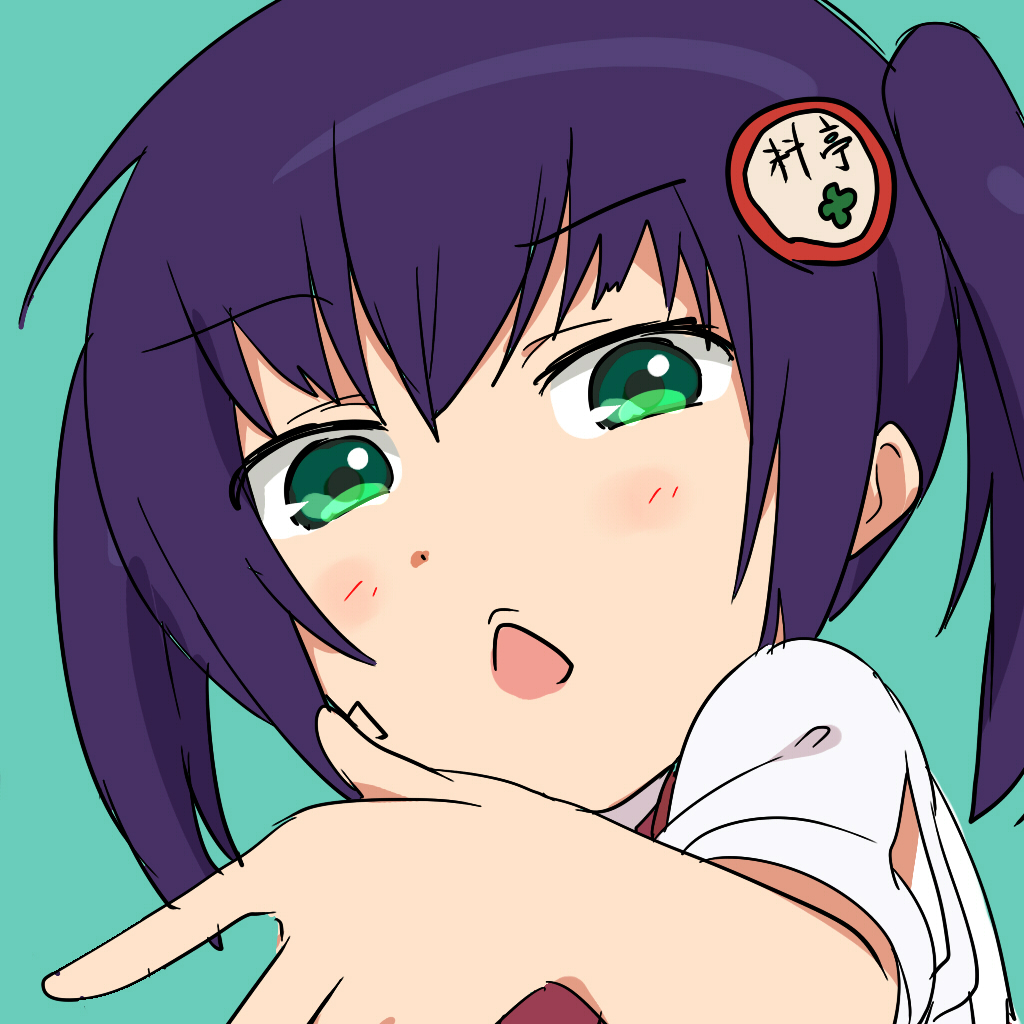
本名とはまったく関係ないうえに、実は一度改名して「荻pote」になっています(笑)。もともと作品を発表していたペンネームがあまりにふざけていたので、少しお仕事をいただけるようになると変えたくなりまして。
── いつ頃から仕事の依頼を受けるようになったんですか?

── 昔からイラストレーター志望だったんですか?

── 美大に通っていたわけではないんですね。

── 影響を受けた作品やクリエイターを教えてください。

── アニメやマンガは昔からお好きだったんですか?

── ということは、それまでは全然違う作風だったんですか?

陰影とエフェクトで、アニメ塗りは変わる!
── 荻poteさんはアニメ塗りを得意としていますよね。アニメ塗りは初心者も挑戦しやすい塗り方ですが、一歩間違えると、のっぺりした印象になってしまいます。

── 荻poteさんは、その問題をどうクリアしましたか?



── なぜアニメ塗りにこだわりを持つようになったのでしょうか? ほかの塗り方を試した時期はありますか?

いろいろなストーリーをイラストに詰め込む
── 荻poteさんのイラストは、背景や小物、ガラスの反射、光の屈折と細部まで描き込まれ、情報が詰まっていますよね。

── しかし、それだけディテールまで凝ったイラストを描くとなると、アイデアに悩むことはありませんか?

── 想像力がすごい……!

── たとえば画集の表紙のイラストには、節水ポスターや粉洗剤など、「たしかに学校の水飲み場ってこんなものがあったけど、イラストを見るまで忘れていた」というモチーフが登場します。そのような「些細だけど確実に存在したもの」の描写がすごいなと。

── 荻poteさんは新潟県出身と聞きました。ノスタルジックな風景描写には、ご自身の体験も反映されているんでしょうか?

── 荻poteさんの作品にある少しの物悲しさ、分かる気がします……! 作品の資料として、どこかに撮影に出かけるようなことはありますか?

── 素朴な疑問なのですが、描き込んだ背景をぼかすときの感情ってどんなものでしょうか……?

目立たせるために、瞳の情報量を増やす
── 絵のアイデアはどんな風に出していますか?

── エフェクトについては、作業のどの段階で決めていますか?

── 荻poteさんのイラストは、瞳が印象的です。瞳を描く上でどんなことを意識していますか?

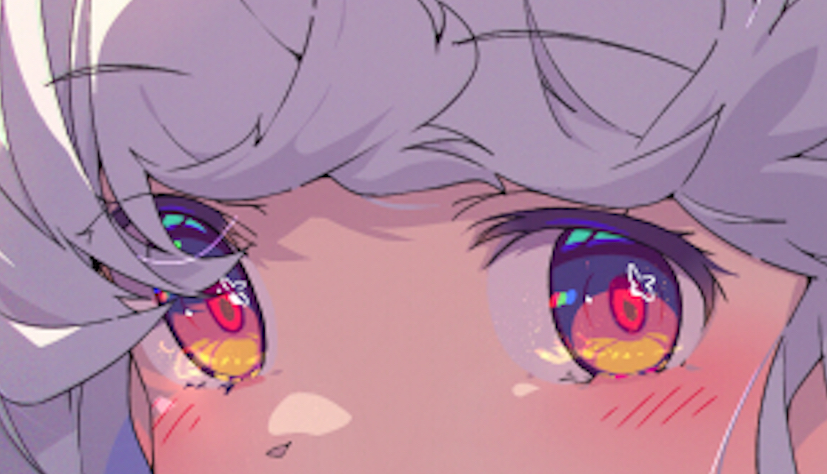
── お話を伺っていると、光や陰影に対する感覚が鋭いイラストレーターなんだなと感じます。

── YouTubeで公開している動画といい、今回のインタビューといい、荻poteさんはご自身のテクニックを気前よく伝えてくれるので、イラストレーター志望者にとってすごくありがたい存在だと感じます。

個展のメインビジュアルは、「夏に一番映える絵」
── ここからは個展「彗月(はづき)」について教えてください。タイトルも印象的ですね。

── 内装にもこだわったそうですね。

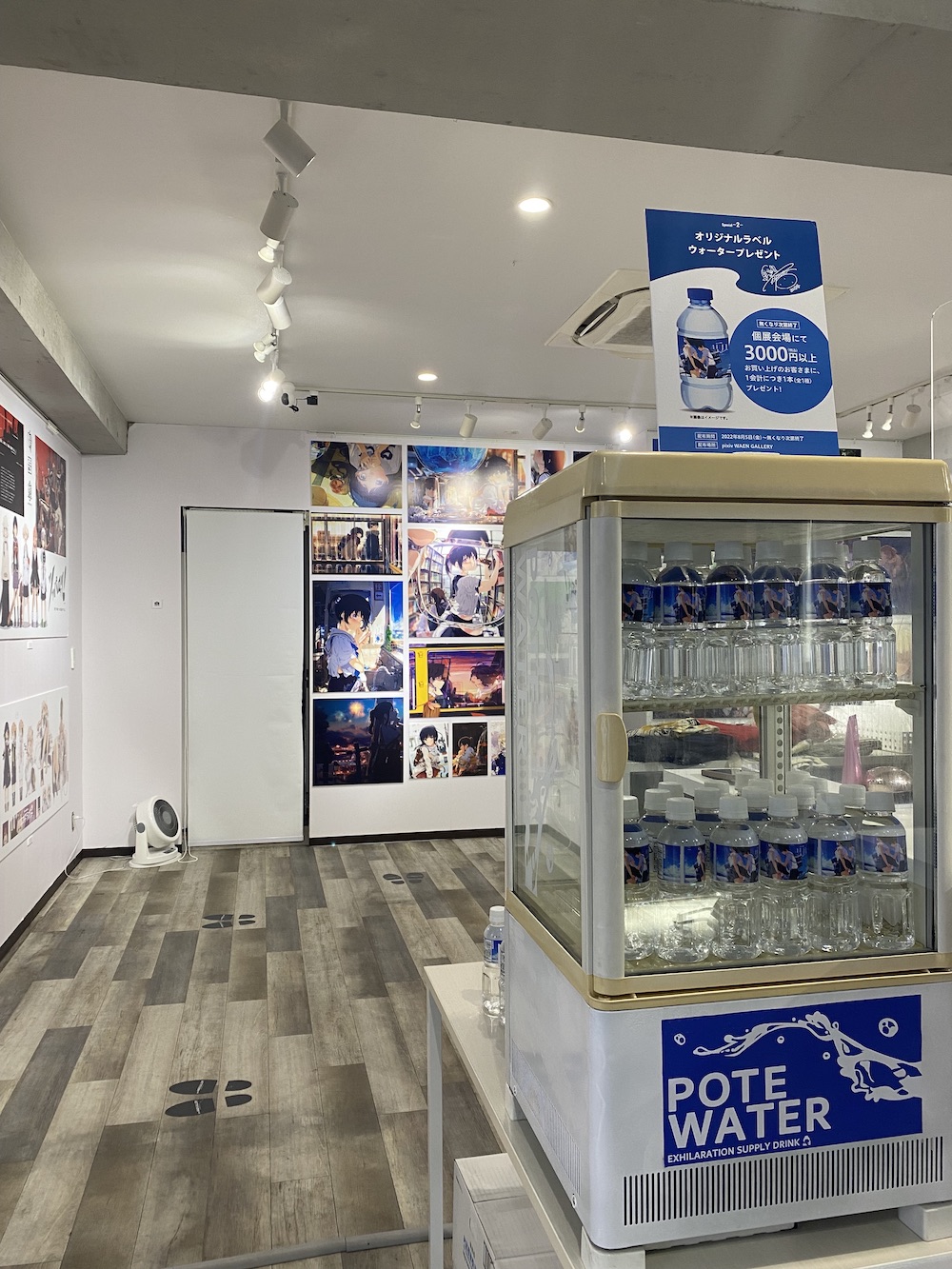
どこか懐かしいデザインの冷蔵ケース。中に入っているオリジナルデザインのボトルウォーターは、グッズを税込3,000円以上ご購入いただいた方にプレゼントしています。
── 個展で特に注目してほしい部分はどこでしょうか?

自分の絵は本来、現実で映える解像度やサイズで描いています。画集を出したときも「ここにこんなモチーフが描き込まれていたのか」と驚く声をいただきましたが、リアルな展覧会となったら、さらに多くの発見を皆さんにお届けできるのではないかと楽しみにしています。あとはグッズにもこだわりました。僕が本当に欲しいと思えるものを実現していただきましたし、無料配布もありますので、ぜひどれか思い出として持ち帰っていただけるとうれしいです。
── 最後に、イラストレーターとして今後の目標を教えてください。

8/24(水)まで開催中! 荻pote初個展「彗月」
pixivとツインプラネットが共同運営するギャラリー「pixiv WAEN GALLERY by TWINPLANET × pixiv」にて、荻poteさんの個展「彗月」が2022年8月24日(水)まで開催中です。
オリジナルイラストを中心に約80点のイラストを展示します。夏とノスタルジーをテーマにした内装や、荻poteさん監修のグッズなど、こだわりのつまった個展となっています。
開催期間:2022年8月5日(金)~8月24日(水)
定休日:なし
入場無料
所在地:東京都渋谷区神宮前5-46-1 TWIN PLANET South BLDG. 1F
営業時間:12:00~19:00
※混雑時は整理券対応をさせていただく可能性がございます。あらかじめご了承ください。
※新型コロナウイルスへの対策について
荻pote個展「彗月」について、現時点では8月24日(水)までの開催を予定しております。今後も状況を注視しながら対応を進めてまいりますが、新型コロナウイルスの感染状況などにより、開催期間に変更が生じる場合がございます。販売商品や来店方法等を含め、運営状況については、随時pixiv WAEN GALLERY公式HP、公式Twitterにてお知らせさせて頂きます。何卒ご理解賜りますよう、重ねてお願い申し上げます。
一部グッズはWEB販売も!
荻poteさんの強い要望により実現したトレーディングアクリルフィギュア。全7種のうち、1種はシークレット。
高精細のキャンバスアートとアクリルパネルを重ねたレイヤードグラフはグッズ担当者の自信作。










